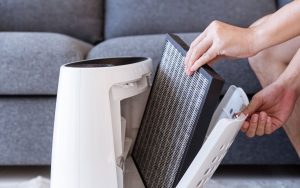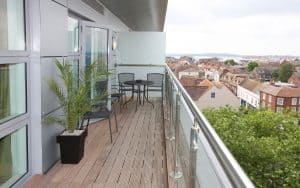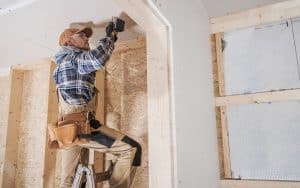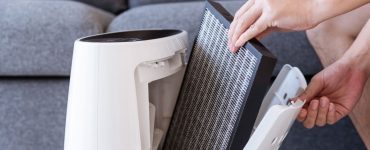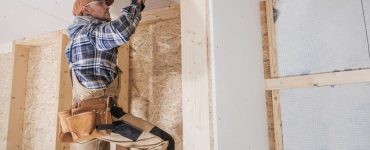One of the most important aspects of home repair and maintenance is making sure that your home is protected and withstands any potential damage. With many different materials on the market, it may be hard to know which product best suits your needs.
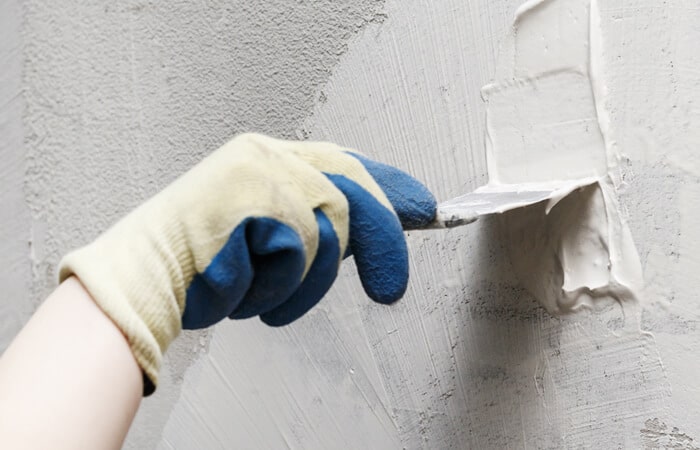
For this article, we will compare the difference between spackle and joint compound as both products are used extensively in the construction industry for repairs such as filling cracks or nail holes in walls or ceilings.
What is Joint Compound?
Joint compound is a popular material for finishing drywall. It’s a two-part mixture that comes as a gypsum dust and water. When combined, the ingredients create a thick paste that can be smoothed onto the surface of the drywall.
The texture of joint compound resembles plaster or stucco and often comes in a variety of colors. When the joints are smoothed out with a trowel, it can provide a beautiful finish to any project.
Joint compound can be purchased at any hardware store and comes in various colors to match any type of home interior.
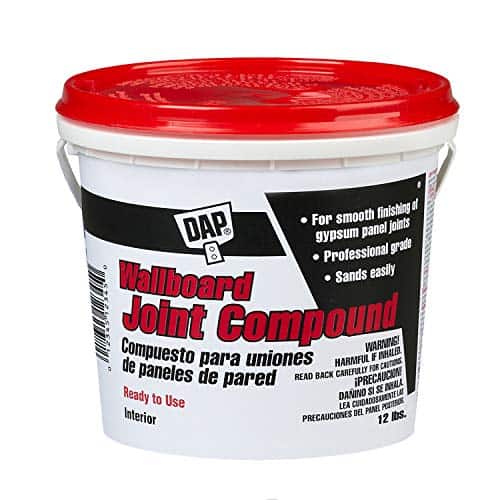
Types of Joint Compound
There are many types of joint compound available on the market, but it’s always important to know what type is best for your project. Two different types of joint compound are water-based and oil-based. Water-based compounds have a texture like wallpaper paste and can be painted in its dry state, whereas oil-based compounds often require the use of an applicator and need to be applied when wet or in a thickened state.
Pros of Joint Compound
The pros of joint compound are numerous. Joint compound is a type of plaster used to fill holes, cracks, and imperfections in the wall. It also provides a protective coating that prevents water from getting behind the walls or damaging the surface.
Joint compound can be purchased in buckets for about five dollars or in tubes that are easier to apply but are more expensive. The high-quality joint compound can last anywhere from three months to two years if it is properly stored.
Cons of Joint Compound
As a drawback of joint compound, it takes a long time to dry on the wall surface. This means that one has to remain on site for an extended period of time, which can be cumbersome or inconvenient.
Furthermore, joint compound is prone to absorbing moisture, which can make the drying process take even longer.
Another drawback of is it’s only available in a consistency that is watery and thin, so it can’t be used on small projects where precision is important.
Tools Needed to Apply Joint Compound
Joint compound is a key part of many home improvement projects. It is used to fill in the gaps between two surfaces, and to create a smooth finish surface for painting. There are a few tools you need to apply joint compound correctly:
A putty knife is the most important tool for applying joint compound. It is a flat, metal blade that comes in different widths. You can use it to spread the compound evenly over the surface, or to scrape off any excess.
You will also need a sanding block. This is a square piece of sandpaper that attaches to your hand with an elastic band. Use it to sand down the joint compound after it has dried, so that it is level with the surrounding surface.
If you are working on a larger project, you may also need a drywall trowel.
Safety Notes on Joint Compound
Many of the common issues that arise when working with joint compound can be avoided if one follows these simple safety tips. Use a respirator when applying the compound to ceilings and other vertical surfaces when using solvent-based sealant, and always wear gloves when spreading or sanding. Avoid contact with the sealant fumes by wearing an appropriate mask. Dilute sealants in a well-ventilated area, especially during hot weather.
What is Spackle?
Spackle is a type of putty that is often used for filling in cracks or holes in walls. It is made from a mixture of gypsum powder and water, and it can be painted over once it has dried. Spackle is relatively easy to use, and it can help to conceal imperfections in walls.
For walls, it’s best to use a mix of drywall spackle and joint compound before painting over the surface. For larger holes, you can apply buckets of wet spackle before leveling it out with a trowel.
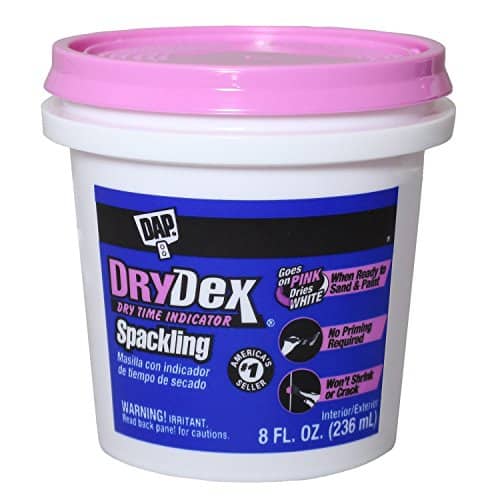
Types of Spackling Compound
If you’re in the market for a spackle compound, there are a few things you need to know. There are four types of Spackle: lightweight, standard, vinyl, and epoxy. Each type has its own benefits and drawbacks.
Lightweight spackle is easy to apply and is good for small repairs. Standard spackle is good for larger repairs and the dry time is longer. Vinyl spackle is waterproof and can be used on ceilings and outside walls. Epoxy spackle is the strongest type and can be used on both indoor and outdoor surfaces.
The main drawback of epoxy spackle is its high price tag. Acrylic spackle is the cheapest option, but it doesn’t bond as well as the other types. Ultimately, the best type of spackle depends on the job at hand.
Pros of Spackle
Spackling is a low-cost and environmentally friendly alternative to other costly fixes such as drywall or caulking. Spackle is perfect for small holes in the ceiling, wall or floor due to it’s ability to be shaped using fingers or a spatula, filling any imperfections in a seamless way.
For the average homeowner, Spackle is a staple in their garage. Homeowners often turn to this simple do-it-yourself fix for when they need it the most. It’s user-friendly because you can apply it without any expertise and in just a few minutes and with just one coat.
Many people are surprised when they find out that spackle will not shrink once it is applied. This means that there is no need to worry about the surface becoming uneven or the position of the spackle having to be fixed.
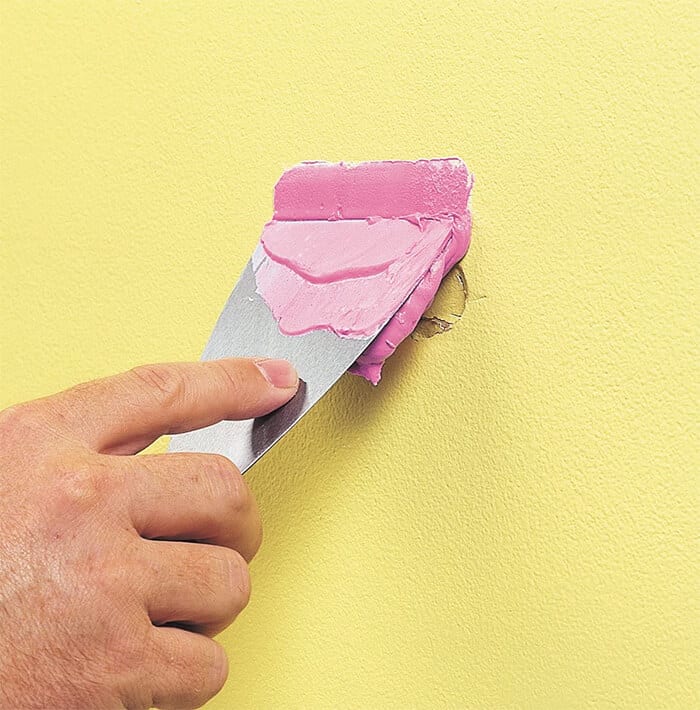
Cons of Spackle
Though Spackle is easy to use, it’s not suitable for projects that are too large or for covering larger, more solid areas. For smaller projects, this product has proven to be very effective.
It is not made for sealing purposes because it becomes brittle after exposure to water or moisture.
Spackle can peel off or crack if it is not applied correctly, and it will also not provide the best paint adhesion.
Safety Notes on Spackles
Mischievous children playing in the kitchen can be a risk to themselves and their family. Spackle is a construction adhesive designed for use on drywall, plaster, and masonry that’s not safe when ingested. A suggestion to parents is to keep spackle out of reach when there are kids around.
What Are Some Tips for Using Joint Compound and Spackle?
When using joint compound and spackle, it is important to read the instructions carefully. In general, you will want to apply the compound or spackle in thin layers, allowing each layer to dry before applying the next. Be sure to avoid clumps or excessive thickness, as this will lead to problems with drying and eventual cracking. You may also want to use a sanding block after each coat to help smooth things out.
What Is the Best Way to Use Joint Compound and Spackle?
There are a few things to consider when using joint compound and spackle. Joint compound is used to fill in the seams between two pieces of drywall, while spackle is used to fill in small holes or dents in the wall. It’s best to use a small putty knife to apply the compound or spackle, and make sure that it’s completely smooth before it dries. You may also need to sand it down after it dries.
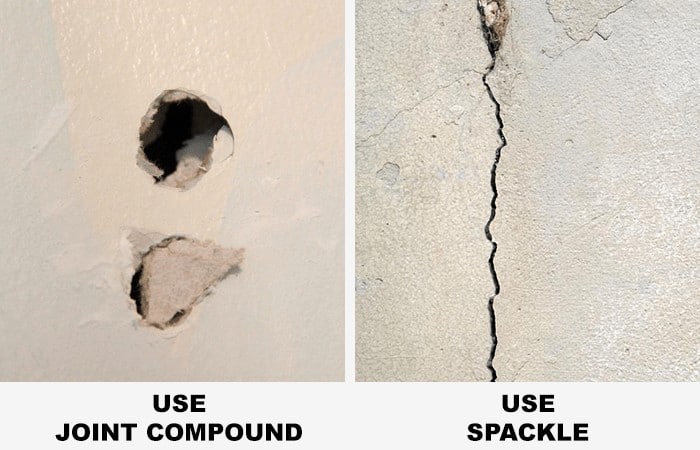
Conclusion
In conclusion, joint compound and spackle are important tools for home improvement. They can be used to fix small problems with your walls or to make larger projects easier. With the right knowledge, these products can help you improve the look and feel of your home.


